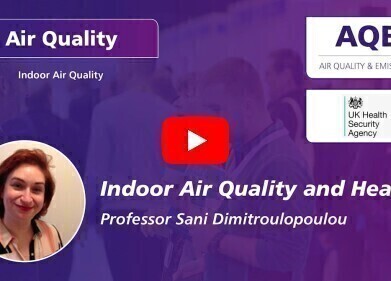-
 The grant will look at the effect of indoor pollution
The grant will look at the effect of indoor pollution
Indoor air quality monitoring (IAQ)
EPA awards grant for native indoor air pollution study
Jul 24 2014
The US Environmental Protection Agency (EPA) has announced the award of a new grant to measure the effects of indoor pollution on native subsistence hunters in subarctic North America. The $700,000 (£411,413) Science to Achieve Results grant has been awarded to Richard Peltier, health scientist at the University of Massachusetts Amherst School of Public Health and Health Sciences.
Mr Peltier is set to lead an environmental health science team, which will use the grant to measure the air quality within tents used by the subsistence hunters to determine whether there are any health effects linked to the exposure to wood smoke. The team will also make recommendations on how to mitigate the effects that are culturally relevant.
The team will partner with First Nation members to perform community-based participatory research, according to Mr Peltier. The study has both observational and intervention components, he continued, in order to provide results that are suitable for the native tribes.
The study will begin in September and will provide a better level of understanding of multi-pollutant emissions created by the burning of different forms of biomass within the tribe tents. It will also look at how effective a number of different mitigation methods are in order to limit the effect the emissions have on human health.
Study participants will be recruited from First Nation Omushkego Cree members who live at Fort Albany, Ontario, by Mr Peltier in collaboration with the University of Toronto and Ryerson University.
The tents used by the tribes are used for socialising by members, including entire families. They are used for the smoking process for the preservation of food, which can last for hours, if not days. Wood is also burnt inside the tents to provide heat, subjecting people to high levels of air pollution for two-to-six week hunting periods twice a year, said Mr Peltier.
The research team will collect blood pressure and lung function data from the subjects, as well as analysing trace gases and particulate matter within the tents. Blood tests will also be used to look for inflammation markers, while urine samples will provide an insight into the metabolites of wood smoke.
Digital Edition
AET 28.4 Oct/Nov 2024
November 2024
Gas Detection - Go from lagging to leading: why investment in gas detection makes sense Air Monitoring - Swirl and vortex meters will aid green hydrogen production - Beyond the Stack: Emi...
View all digital editions
Events
Jan 14 2025 Abu Dhabi, UAE
Jan 20 2025 San Diego, CA, USA
Carrefour des Gestions Locales de L'eau
Jan 22 2025 Rennes, France
Safety, Health & Wellbeing LIVE
Jan 22 2025 Manchester, UK
Jan 25 2025 San Diego, CA, USA


















